 June 15, 2017 John E. Ross, KD8IDJ, Editor
| ||||||
State and Local Governments Honor Amateur Radio in Advance of Field Day 2017 Each year as ARRL Field Day approaches, state and local governments have traditionally taken the opportunity to honor Amateur Radio in the form of various proclamations. This year is no exception.
Nevada Governor Brian Sandoval declared June as Amateur Radio Month in his state. [Photo courtesy of John Bigley, N7UR]
Spacecraft Probe to Listen for ARRL Field Day Signals The Enhanced Polar Outflow Probe (e-POP) onboard the Canadian Cascade Smallsat and Ionospheric Polar Explorer (CASSIOPE) satellite will again support Amateur Radio citizen science by participating in ARRL Field Day 2017, June 24-25. The HamSCI citizen science initiative says that, from a radio science perspective, Field Day is an ideal time for e-POP to study the structure of Earth's ionosphere using participants' transmissions. HamSCI was started by ham scientists who study upper atmospheric and space physics.
During Field Day 2015, the receiver was activated for 2 minutes while e-POP was just north of Milwaukee, on a southeasterly heading. It was in a crossed-dipole configuration, with its two channels tuned to 3.525 and 7.525 MHz, respectively. A spectrogram that summarizes the results shows that not only were CW transmissions visible on the 40-meter channel (B), but they were only observed for about the first 30 seconds, even though the Reverse Beacon Network (RBN) showed that these stations transmitted throughout the experiment period. No signals were received on the 80-meter channel (A), and, at least theoretically, those signals should not have been able to penetrate the ionosphere and propagate to the receiver during the experiment.
One hypothesis under investigation is that the ham signals disappeared as the spacecraft headed south into latitudes where the ionosphere was denser and blocked the transmissions. For Field Day 2017, e-POP will dedicate all of its resources to studying HF radio wave propagation using ham radio transmissions. The Radio Receiver Instrument rwill be tuned to the 40- and 80-meter CW bands, although precise frequencies have not yet been determined. It is scheduled to be activated six times, in 10-minute increments, over Field Day weekend. Read more. Federal Register Publishes New MF/LF Rules, But Operation is Not Yet Legal The FCC Report and Order (R&O) spelling out operational rules to allow secondary Amateur Radio access to 630 meters and 2,200 meters now has appeared in the Federal Register, but radio amateurs still may not access the new bands. That's because specific procedures specific procedures, now under development, to detail how radio amateurs will notify the Utilities Technology Council (UTC) of their proposed station location prior to commencing operation, still must undergo approval. The FCC said the notification requirement is necessary to confirm that a station is not located within 1 kilometer of an active power line communication (PLC) system.
"While the R&O has been published in the Federal Register, amateurs may not begin using the new bands until after the FCC's Wireless Telecommunications Bureau issues a Public Notice outlining necessary procedures to notify UTC of pending operation, as the new rules require," ARRL Regulatory Information Manager Dan Henderson, N1ND, said. "There is no timetable for that Public Notice to be released. Amateurs need to practice patience." The FCC said the notification requirements it adopted "seek to strike a balance between amateur operations used for experimental purposes and PLC operation used by electric utilities for the reliability and security of electric service to the public." Once notification procedures are in place, radio amateurs intending to operate on either band will notify UTC of their geographical location. If UTC does not object within 30 days, amateur operation may commence. The FCC turned away an ARRL request for direct access to the PLC database that UTC maintains. Once UTC has developed the new information collection procedures, the FCC must submit them for review to the Office of Management and Budget (OMB). "The Commission will publish a separate notice in the Federal Register, inviting comment on the new information collection requirements adopted herein," the FCC said in the R&O. "The requirements will not go into effect until OMB has approved [the notification procedures] and the Commission has published a notice announcing the effective date of the information collection requirements."
In an unrelated action, the FCC allocated 1,900-2,000 kHz to the maritime mobile service (MMS) on a primary basis for non-Federal use in ITU Regions 2 and 3, and limited the use of this allocation to radio buoys on the open sea and the Great Lakes. Amateur Radio was upgraded from secondary to primary in the 1900-2000 kHz segment in 2015. Fifth Annual Experimental MF/LF Outreach and Demonstration Set for Field Day Weekend Again this year, several radio amateurs who also hold FCC Part 5 Experimental licenses for 630 and 2,200 meters will transmit Field Day greetings throughout Field Day weekend, June 24-25. "This event has been organized for the fifth consecutive year to promote awareness of the new MF and LF amateur allocations ahead of the opening of the bands to hams in the US," John Langridge, KB5NJD/WB2XIQ, told ARRL. "It's an opportunity where hams and ham gear come together for a fun weekend, and we hope to add yet another layer to the mix." Participating stations will be on from throughout the US, including Alaska. Additional details and operational status will be posted as they become available.
"Let's face it: It's summer, and noise is high, so some groups will have more success than others, particularly on skywave paths at night when the noise level increases tremendously," Langridge said, "but we have found that the exposure to these bands through this event has been quite high in previous years." "I hope there are a lot of impromptu attempts to copy these stations," Langridge said. "It's a very good engineering exercise for those who like to build antennas on the fly to increase their signal-to-noise ratio." Reports are requested and may be sent to respective station operators, but stations are also encouraged to enter reports on the online QSO/Reception Report Form for the ARRL 600 Meter Experimental Group, WD2XSH. They also can earn Field Day points by sending NTS traffic to ARRL (225 Main St., Newington, CT 06111; 860-594-0200) indicating which stations were heard. Read more. The Doctor Will See You Now! "The Mystery of Sporadic E" is the topic of the current episode of the "ARRL The Doctor is In" podcast. Listen...and learn! Sponsored by DX Engineering, "ARRL The Doctor is In" is an informative discussion of all things technical. Listen on your computer, tablet, or smartphone -- whenever and wherever you like!
Enjoy "ARRL The Doctor is In" on Apple iTunes, or by using your iPhone or iPad podcast app (just search for "ARRL The Doctor is In"). You can also listen online at Blubrry, or at Stitcher (free registration required, or browse the site as a guest) and through the free Stitcher app for iOS, Kindle, or Android devices. If you've never listened to a podcast before, download our beginner's guide. Just 9 Days Until ARRL Field Day! ARRL Field Day -- the most popular on-the-air operating event in Amateur Radio -- is almost here, and official gear and supplies are still available from ARRL. Shirts, hats, pins, patches, stickers, and coffee mugs are a great way to acknowledge -- and commemorate -- your participation in this annual event. Two t-shirt color options are available for 2017 -- red and white. Order one or both!
Get your 2017 ARRL Field Day supplies from the ARRL online store or by calling 888-277-5289 in the US, Monday through Friday, from 8 AM to 5 PM Eastern Time (outside the US, call 860-594-0355). The complete 2017 ARRL Field Day packet is online. For forms, rules, bands, log submissions, and more, visit www.arrl.org/FieldDay. ARRL encourages participants to register their Field Day operations using the FD Site Locator. If you have questions about Field Day, e-mail them or call 860-594-0232. Support ARRL as You Shop for Father's Day Father's Day is Sunday, June 18. If you're looking for the perfect gift, we invite you to shop at AmazonSmile and choose American Radio This helps the League to extend its reach in public service, advocacy, education, technology, and membership. Amazon has a large variety of gifts that are perfect for Father's Day, including electronics, clothing, and more. Make Dad's day. Get him something special while supporting Amateur Radio and ARRL. Bookmark ARRL's link and support Amateur Radio and ARRL every time you shop online. Quicker-Turnaround Digital Modes in Experimental Stage for WSJT-X Suite Recent sporadic-E propagation openings on 6 meters and elsewhere have demonstrated the need for a digital mode with a faster turnaround time than what is offered by currently available software versions. A recent WSJT-X reflector discussion allowed that, while the slow 'JT modes like JT65 and JT9 have excellent sensitivity, their nearly 1-minute-long transmissions may not permit completion of a contact when evanescent signals pop up and quickly disappear under certain E-skip conditions. MSK144 and the fast JT9 submodes allow much shorter transmissions, but they do not offer the multi-decode capability that JT65 users find so effective. Iain MacDonnell, N6ML, was among those remarking that, while the use of JT65 for working E-skip on 6 meters has really taken off, it's too slow to be practical for openings that only last a couple of minutes or so.
WSJT-X developer Joe Taylor, K1JT, weighed in to express his appreciation to all who shared their ideas and experiences using JT9 and JT65 modes during recent multi-hop E-skip openings on 6 meters. "We are very much aware that a mode with most of the excellent characteristics of JT65, but with faster turnaround time, would be a big winner in such situations," Taylor commented on behalf of the WSJT-X development team. "We are experimenting with several such possibilities. Tentative goals include 15-second T/R sequences, sensitivity around S/N = -20 dB, occupied bandwidth less than that of JT65, and capability to decode as many as 10 or 20 signals in a 2-kHz bandwidth." But, Taylor added, developing new modes takes a lot of time, and results are not guaranteed. "We will report significant progress if and when available," he pledged. Read more. -- Thanks to Joe Taylor, K1JT Bear is Unwanted Volunteer, as ARES Team Supports Colorado Road Race Lots of things can go awry when Amateur Radio volunteers are supporting public service events, from technical and weather problems to lost or injured participants. The 2017 Garden of the Gods 10-mile and 10-kilometer races in Colorado was no exception. On Sunday, June 11, the Pikes Peak Amateur Radio Emergency Service (ARES) deployed a dozen operators to support more than 1,400 runners in scenic Garden of the Gods Park just west of Colorado Springs. John Bloodgood, KD0SFY, Region 2, District 2 Emergency Coordinator and Public Information Officer said all was going well, with cooperative weather and only a slight delay due to traffic -- nothing out of the ordinary.
"This bear was apparently trying to get across the road and wasn't quite sure why all these people were running through its home so early on a Sunday morning," Bloodgood said. "It finally saw a gap between groups of runners and dashed across the road, but not before local runner Donald Sanborn managed to get a few pictures of it. In the end, the problem resolved itself before any intervention was necessary." Bloodgood said Dan Huber, KN0MAP, saw the bear and was the first operator to call it in. Matthew Bowker, KD0THF, reported it based on reports from runners. Bloodgood said the ARES volunteers tracked the first three male and female runners from both the 10-mile and the 10-kilometer races, reported on any medical issues, supported aid station logistics, helped to ensure the course was clear, tracked the last runners, and provided an operator on a bicycle for the sweep function. Bears notwithstanding, Bloodgood said the event has been a fairly easy one to support and offers a good training ground for less-experienced operators. "Our most intense and demanding events, the Pikes Peak International Hill Climb (vehicle race) and Pikes Peak Ascent and Marathon (half and full marathons) are coming up," he added. Read more. In Brief...
ARRL Donors Feted at Dayton Reception: The 17th Annual ARRL Donor Recognition Reception took place on May 18 at America's Packard Museum in Dayton. Guests included ARRL's most generous supporters, including Maxim Society and Legacy Circle members. QST Contributing Editor Joel Hallas, W1ZR, was the keynote speaker, and Maxim Society members received special recognition. ARRL CEO Tom Gallagher, NY2RF, and ARRL President Rick Roderick, K5UR, welcomed guests. Dayton Amateur Radio Association (DARA) Treasurer, Mike Kalter, W8CI, presented the club's 2017 pledge payment to members of the ARRL Second Century Campaign (SCC) committee who were present that evening. DARA has made a $100,000 commitment to support ARRL's Endowment. Photos from the ARRL Donor Recognition Reception are available online.
The K7RA Solar Update Tad Cook, K7RA, Seattle, reports: At 2311 UTC on June 14 the Australian Space Weather Forecast Centre issued a geomagnetic disturbance warning, predicting geomagnetic activity to reach active levels -- with isolated minor storming possible -- on June 16. A very fast-moving stream of solar wind from a coronal hole is expected to arrive on June 16, possibly sparking G1-class geomagnetic storms as well as auroral displays at high latitudes.
Average daily planetary A index increased from 5.6 to 7.3 and average mid-latitude A index went from 5.6 to 6.9. Over the June 1-7 reporting week, the mid-latitude and planetary A indices were both 5.6. Predicted solar flux is 74 on June 15-21; 72 on June 22-24; 70 on June 25; 75 on June 26-July 7; 78 on July 8; 78, 77, 78, 76, and 74 on July 8-12; 72 on July 13-21; 70 on July 22-23, and 75 on July 24 and beyond. Predicted planetary A index is 15, 25, 15, 12, and 10 on June 15-19; 5 on June 20-July 8; 15, 12, 8, 15, 25, and 15 on July 9-14; 12 on July 15-16, and 5 on July 17 and beyond. Sunspot numbers for June 8 through 14, 2017 were 12, 0, 0, 0, 0, 11, and 11, with a mean of 4.9. The 10.7-centimeter flux was 74, 73.7, 74.7, 74.3, 75.2, 74.9, and 74.1, with a mean of 74.4. Estimated planetary A indices were 4, 5, 4, 17, 8, 8, and 5, with a mean of 7.3. Estimated mid-latitude A indices were 5, 6, 5, 14, 6, 6, and 6, with a mean of 6.9. Send me your reports and observations! Just Ahead in Radiosport
See the ARRL Contest Calendar for more information. For in-depth reporting on Amateur Radio contesting, subscribe to The ARRL Contest Update via your ARRL member profile e-mail preferences. Upcoming ARRL Section, State, and Division Conventions
Find conventions and hamfests in your area.
. .
Subscribe to...
Free of charge to ARRL members...
Find ARRL on Facebook! Follow us on Twitter and Instagram! | ||||||
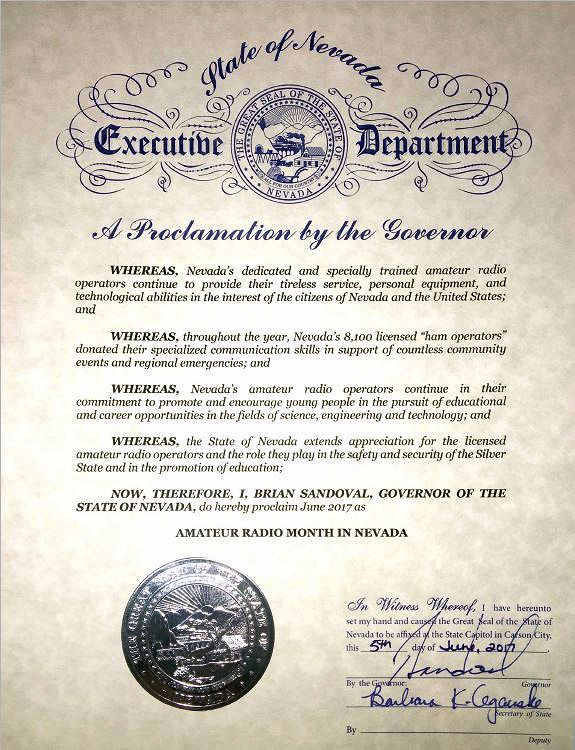
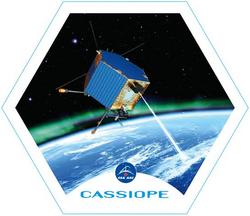 One of e-POP's instruments is the Radio Receiver Instrument (RRI), a digital receiver with four 3-meter monopole antennas. Its scientific objective is to study natural and artificial radio emissions from 10 Hz to 18 MHz. The receiver's monopoles can be electronically configured into a crossed-dipole setup, and it has two data channels -- one for each dipole. Each channel is sampled at 62.5 kHz and passed through a 30-kHz bandpass.
One of e-POP's instruments is the Radio Receiver Instrument (RRI), a digital receiver with four 3-meter monopole antennas. Its scientific objective is to study natural and artificial radio emissions from 10 Hz to 18 MHz. The receiver's monopoles can be electronically configured into a crossed-dipole setup, and it has two data channels -- one for each dipole. Each channel is sampled at 62.5 kHz and passed through a 30-kHz bandpass.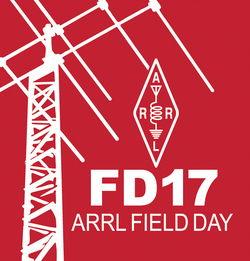 The signals heard can be used to study HF propagation, and the advantage of using Amateur Radio transmissions is that call signs readily identify a signal's source, which can be fed into a HF ray trace model, and then used to elucidate the properties of the ionosphere during the experiment. During Field Day 2015, 23 call signs were identified.
The signals heard can be used to study HF propagation, and the advantage of using Amateur Radio transmissions is that call signs readily identify a signal's source, which can be fed into a HF ray trace model, and then used to elucidate the properties of the ionosphere during the experiment. During Field Day 2015, 23 call signs were identified..jpg)
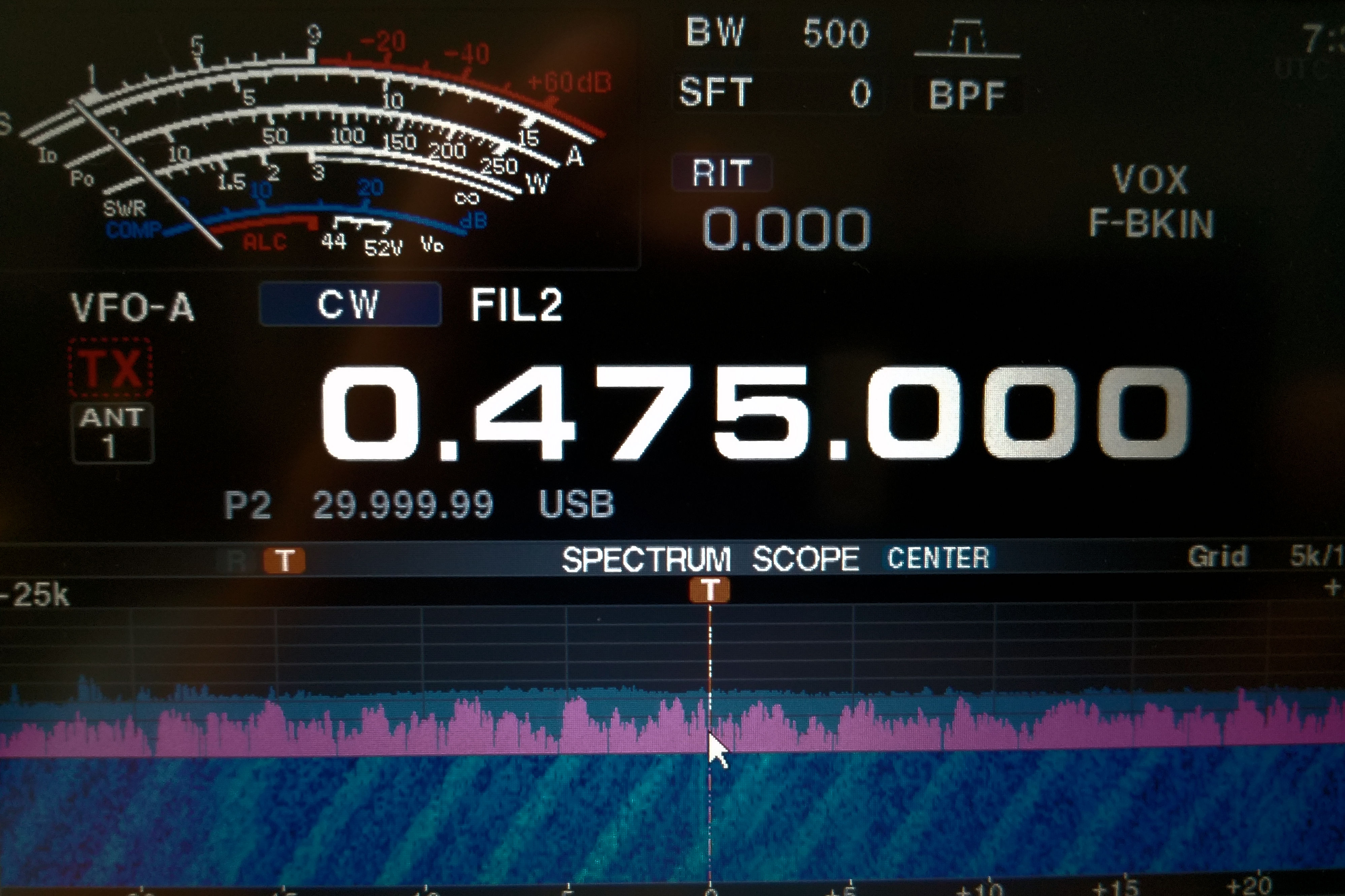 Langridge encouraged Field Day stations to use HF rigs that include general coverage receivers capable of listening below 500 kHz, coupled to "whatever antennas they might have on site to listen for these stations and others." He said HF dipoles and verticals are probably best, with any antenna tuners placed in bypass mode.
Langridge encouraged Field Day stations to use HF rigs that include general coverage receivers capable of listening below 500 kHz, coupled to "whatever antennas they might have on site to listen for these stations and others." He said HF dipoles and verticals are probably best, with any antenna tuners placed in bypass mode..jpg) Every 2 weeks, your host, QST Editor-in-Chief Steve Ford, WB8IMY, and the Doctor himself, Joel Hallas, W1ZR, will discuss a broad range of technical topics. You can also e-mail your questions to
Every 2 weeks, your host, QST Editor-in-Chief Steve Ford, WB8IMY, and the Doctor himself, Joel Hallas, W1ZR, will discuss a broad range of technical topics. You can also e-mail your questions to 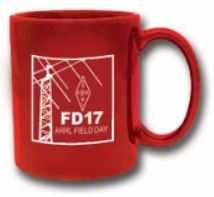 Encourage family, friends, and fellow hams to take part in ARRL Field Day with recruitment
Encourage family, friends, and fellow hams to take part in ARRL Field Day with recruitment  Relay League Inc. (ARRL) as the charity to support. With every purchase you make at AmazonSmile, Amazon will make a contribution to ARRL.
Relay League Inc. (ARRL) as the charity to support. With every purchase you make at AmazonSmile, Amazon will make a contribution to ARRL.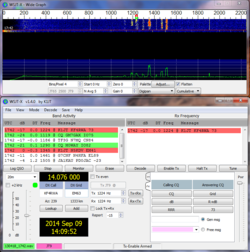 Joe Dzekevich, K1YOW, of Harvard, Massachusetts, sounded a similar theme. "A few days ago we had a great opening on 6 meters, especially here in the New England area, given our latitude," he noted. "I often find that often one cannot complete a QSO due to QSB and the ins and outs of Es. Yet, being a propagation buff, I love the idea that I can leave the rig on 50.276 in JT65 mode and then see who I hear throughout the day via PSK Reporter."
Joe Dzekevich, K1YOW, of Harvard, Massachusetts, sounded a similar theme. "A few days ago we had a great opening on 6 meters, especially here in the New England area, given our latitude," he noted. "I often find that often one cannot complete a QSO due to QSB and the ins and outs of Es. Yet, being a propagation buff, I love the idea that I can leave the rig on 50.276 in JT65 mode and then see who I hear throughout the day via PSK Reporter."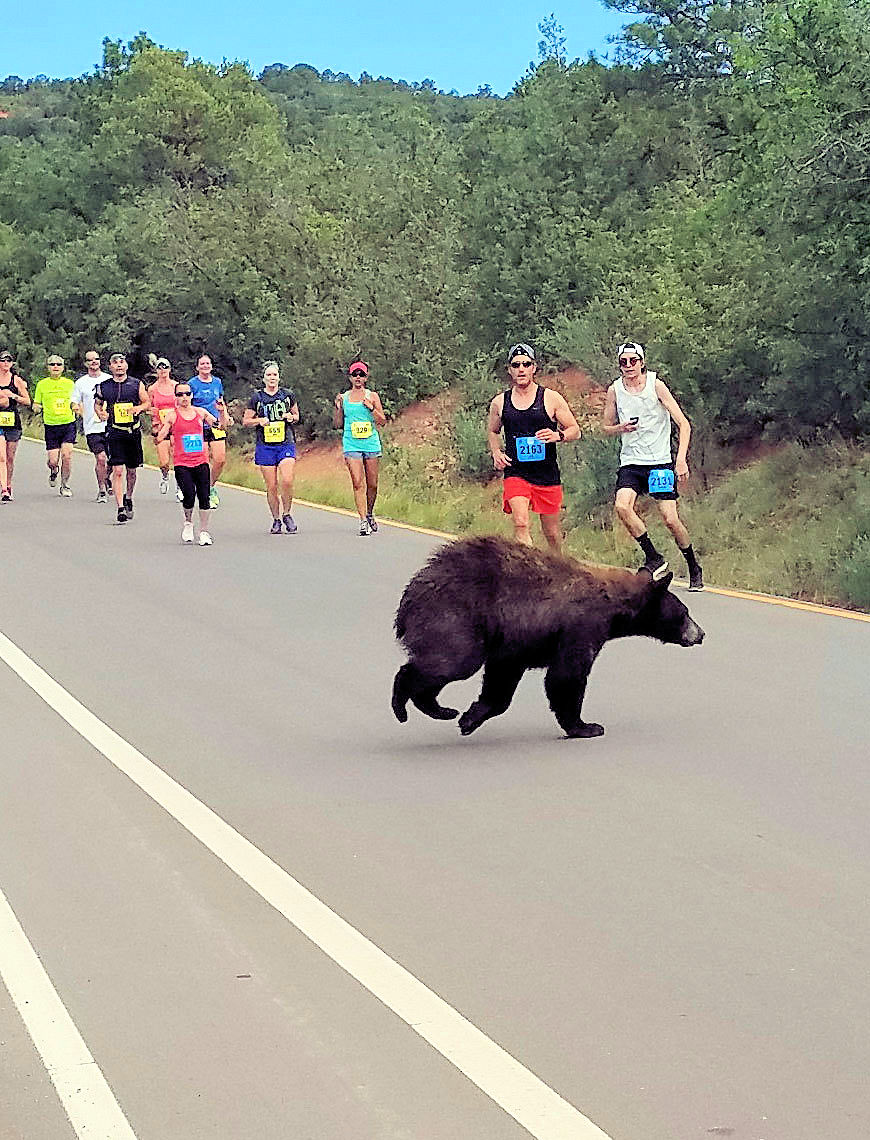 "The real excitement came when a couple of the reporting positions called in to report that a bear was on the course," Bloodgood said. "Bears are not uncommon in this area, and most of the locals aren't too fazed by them; we know they will be out foraging this time of year." But for runners unfamiliar with the lay of the land there, the sudden appearance of a bear can be alarming, he added.
"The real excitement came when a couple of the reporting positions called in to report that a bear was on the course," Bloodgood said. "Bears are not uncommon in this area, and most of the locals aren't too fazed by them; we know they will be out foraging this time of year." But for runners unfamiliar with the lay of the land there, the sudden appearance of a bear can be alarming, he added.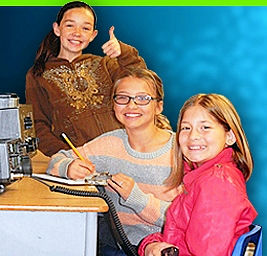 Kids Day is Sunday, June 18:
Kids Day is Sunday, June 18: 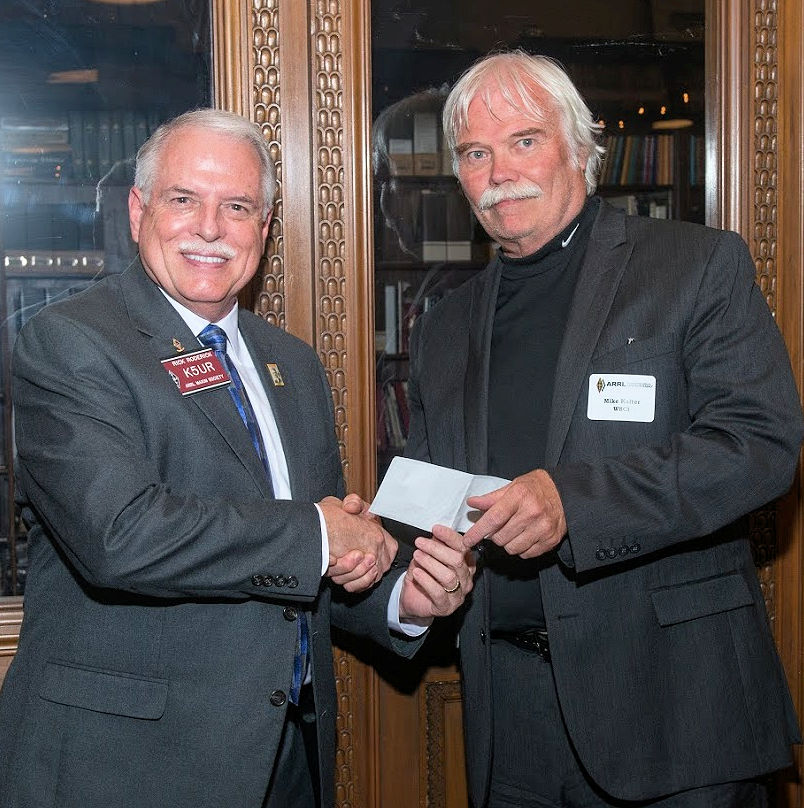
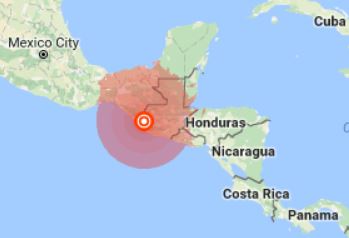 Amateur Radio Net Activated in Wake of Magnitude 6.9 Earthquake in Guatemala: An Amateur Radio net has been activated in the aftermath of a magnitude 6.9 earthquake early this morning (June 14) some 10 kilometers from Malacatán. According to information relayed by Dani Ardon, TG9AMD, of the Radio Amateurs Club of Guatemala (CRAG), "At the moment, neither major damage nor reports of any victims have been reported." Ardon said the net has been monitoring 7.090 MHz as well as the 146.88 MHz CRAG Network frequency. Stations in Panama, Nicaragua, El Salvador, and Honduras are reported to be ready to provide any needed assistance. The US Geological Survey (USGS) points out that Central America is "very seismically active." The USGS said the earthquake "occurred as the result of normal faulting at an intermediate depth, approximately 100 kilometers beneath the surface of coastal Guatemala." -- Thanks to César Pio Santos, HR2P, EMCOR Region 2; USGS
Amateur Radio Net Activated in Wake of Magnitude 6.9 Earthquake in Guatemala: An Amateur Radio net has been activated in the aftermath of a magnitude 6.9 earthquake early this morning (June 14) some 10 kilometers from Malacatán. According to information relayed by Dani Ardon, TG9AMD, of the Radio Amateurs Club of Guatemala (CRAG), "At the moment, neither major damage nor reports of any victims have been reported." Ardon said the net has been monitoring 7.090 MHz as well as the 146.88 MHz CRAG Network frequency. Stations in Panama, Nicaragua, El Salvador, and Honduras are reported to be ready to provide any needed assistance. The US Geological Survey (USGS) points out that Central America is "very seismically active." The USGS said the earthquake "occurred as the result of normal faulting at an intermediate depth, approximately 100 kilometers beneath the surface of coastal Guatemala." -- Thanks to César Pio Santos, HR2P, EMCOR Region 2; USGS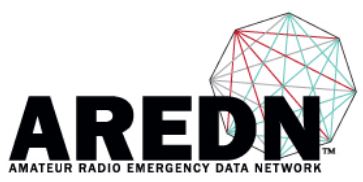 Amateur Radio Mesh Network Brought into Mix as Volunteers Assist in South African Fire Disaster: An intense winter storm and severe drought in South Africa's Western Cape region earlier this month resulted in devastating fires that ravaged parts of the Southern Cape Area, with the city of Knysna being the worst affected. Some fires were reported still burning, but contained, this week after winds subsided over the weekend. Johan Terblanche, ZS1I, in Mossel Bay, who administers the Amateur Radio Emergency Data Network (
Amateur Radio Mesh Network Brought into Mix as Volunteers Assist in South African Fire Disaster: An intense winter storm and severe drought in South Africa's Western Cape region earlier this month resulted in devastating fires that ravaged parts of the Southern Cape Area, with the city of Knysna being the worst affected. Some fires were reported still burning, but contained, this week after winds subsided over the weekend. Johan Terblanche, ZS1I, in Mossel Bay, who administers the Amateur Radio Emergency Data Network (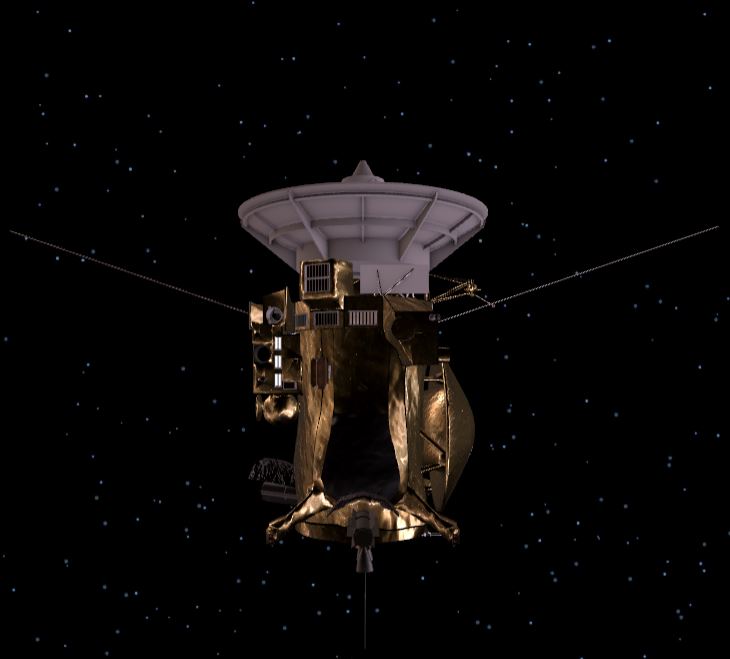 Radio Amateur Hears Cassini Spacecraft: Paul Marsh, M0EYT, has confirmed reception of the Cassini spacecraft, now in orbit around Saturn. "I copied Cassini on 8,429.247035 MHz during its last radio occultation experiment, where the TX is carrier-only mode on S, X, and Ka bands," Marsh told ARRL. "I was using my 2.4-meter antenna at the time." Marsh said his homebrew downconverter is locked to a 10-MHz station reference, and SDR processing is done with the RF Space kit. Launched in 1997, Cassini will crash into Saturn in early September. The research spacecraft, which carried the European Space Agency's Huygens probe now on the surface of Saturn's moon Titan, currently is executing about 2 dozen dives through Saturn's rings. The Huygens probe separated from the orbiter in 2004 and transmitted data to Earth using the orbiter as a relay. This was the first successful landing in the outer solar system. Marsh is heavily involved with satellite tracking and monitoring activities and is a contributor to the Amateur Deep Space Network (
Radio Amateur Hears Cassini Spacecraft: Paul Marsh, M0EYT, has confirmed reception of the Cassini spacecraft, now in orbit around Saturn. "I copied Cassini on 8,429.247035 MHz during its last radio occultation experiment, where the TX is carrier-only mode on S, X, and Ka bands," Marsh told ARRL. "I was using my 2.4-meter antenna at the time." Marsh said his homebrew downconverter is locked to a 10-MHz station reference, and SDR processing is done with the RF Space kit. Launched in 1997, Cassini will crash into Saturn in early September. The research spacecraft, which carried the European Space Agency's Huygens probe now on the surface of Saturn's moon Titan, currently is executing about 2 dozen dives through Saturn's rings. The Huygens probe separated from the orbiter in 2004 and transmitted data to Earth using the orbiter as a relay. This was the first successful landing in the outer solar system. Marsh is heavily involved with satellite tracking and monitoring activities and is a contributor to the Amateur Deep Space Network (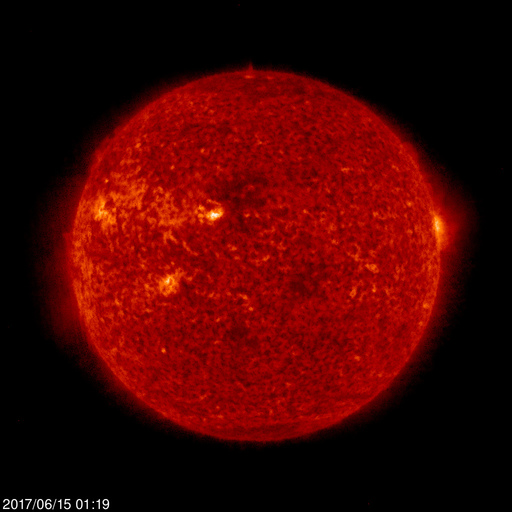 We saw four zero-sunspot days over the past week, so the average daily sunspot number declined from 19.3 to 4.9 from the previous 7 days. Average daily solar flux for the June 8-14 reporting week dipped from 77.1 to 74.4.
We saw four zero-sunspot days over the past week, so the average daily sunspot number declined from 19.3 to 4.9 from the previous 7 days. Average daily solar flux for the June 8-14 reporting week dipped from 77.1 to 74.4.







